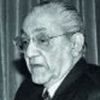Ordinances a blot on the Constitution. SC must act

Absolute monarchs wield legislative and executive power. Democracies do not and cannot. It is amazing that the framers of India’s Constitution blindly endowed the governments at the Centre and in states with the power to legislate, albeit in emergent circumstances for a limited period and subject to ratification by the legislature. The conditions were soon overlooked. Ordinance raj came to stay.
The excuse was that a huge country needed this power in case of emergency. But Britain’s Parliament gave no such legislative power to the Canadian government when it enacted the British North America Act, 1867, nor did the Commonwealth of Australia Constitution Act, 1900. Why was India singled out? The clue lies in India’s constitutional history.
Under the Government of India Act, 1858, enacted after the 1857 uprising, legislative and executive power was vested in the governor-general assisted by an executive council. A grain of popular element was introduced by the Indian Councils Act, 1861. A legislative council presided over by the governor-general made laws. It was a unitary system. The Government of India Act, 1919, retained the unitary system but allowed the governor-general to make ordinances in cases of emergency for six months. They would have the same force as an act of the central legislature. The condition was “in case of emergency”.
This was different from the governor-general’s power to “certify” a bill, which the legislature refuses to pass, as one “essential” in the interests of the country. It had to be approved by the British Crown. In the case of an emergency, the governor-general passes the ordinance immediately subject to London’s power to disallow it rather than wait till the central legislative Assembly expresses its refusal — a cumbrous situation. Governors-general used this power to promulgate ordinances even while the Assembly was in session.
The Government of India Act, 1935, conferred responsible government in the provinces; but the federal part never came into force. It split the ordinance where the governor-general had to act on the advice of ministers — this part never came into force — and when he acts without the advice of ministers. Additionally, he had the power to enact a governor-general’s act. Governors in the provinces also got the power to promulgate ordinances.
The framers of the Constitution adopted the ordinance mindlessly with its colonial baggage. It was a tool forged in London to help override whatever limited powers the central Assembly chose to exercise, if it affected British interests. The ordinance mechanism was devised in 1919 because the central Assembly was set up. This continued till Independence, in a modified form after the Act of 1935.
The ordinance continues to this day. Article 123 of the Constitution empowering the President to promulgate ordinances, stipulates: “If at any time, except when both Houses of Parliament are in session, the President is satisfied that circumstances exist which render it necessary for him to take immediate action he may promulgate such ordinances as the circumstances appear to him to require.” Recess of Parliament is one condition. The other is the honest belief on the government’s part that circumstances had arisen after Parliament went into recess, which render it necessary for him “to take immediate action.”
In 1969, Justice J.C. Shah noted in the Supreme Court that “exercise of the power is strictly conditional” and pointedly remarked: “Determination by the President of the existence of circumstances and the necessity to take immediate action on which the satisfaction depends, is not declared final.” In 1980, the court said, “That power was to be used to meet extraordinary situations and not perverted to serve political ends.”
The only abuse the Supreme Court nullified was re-promulgation. That the government should even contemplate an ordinance to legislate the triple talaq ban reveals a lot.
Ordinances are open to judicial review, but on limited grounds. The Supreme Court ruled that “the test is whether the satisfaction is based on some relevant material. The court... will not determine the sufficiency or adequacy of the material”. This is wrong.
The court ought to have ruled that circumstances which could not possibly justify the conclusion that “immediate action was necessary” render the ordinance unconstitutional. It did not. Seventy years after Independence, India remains chained to the doctrine of subjective satisfaction which Britain, where it originated, discarded long ago.
The ordinance is, both, a blot in and a blot on the Constitution. No court can erase it. But the Supreme Court can insist on proof of the existence of circumstances which render immediate action necessary; not merely desirable or convenient.
By arrangement with Dawn

